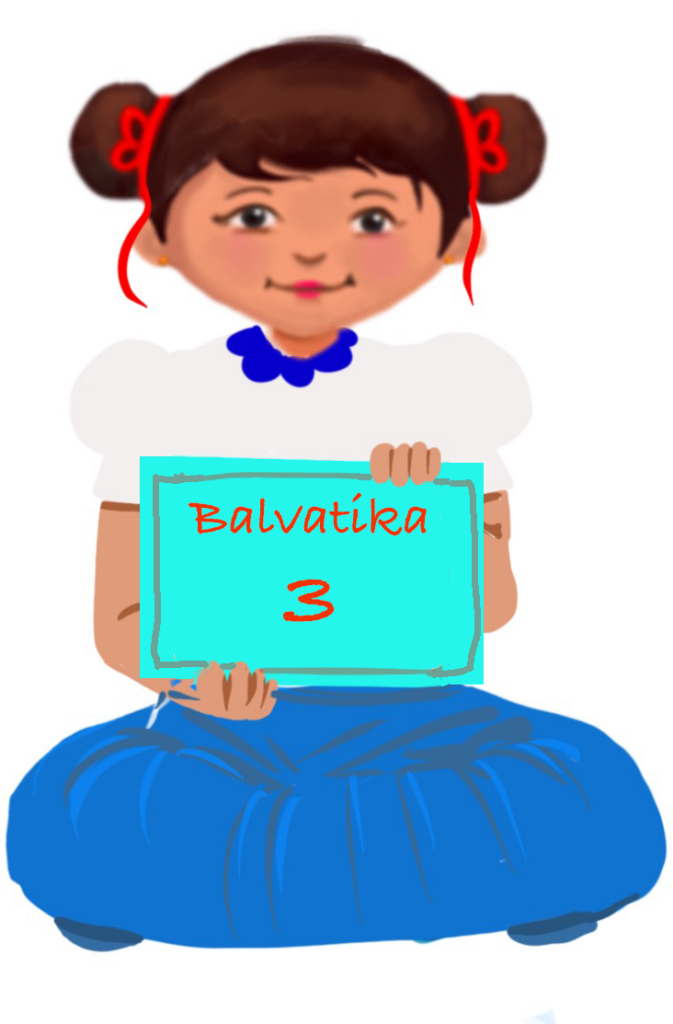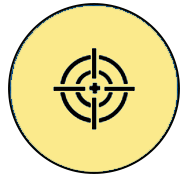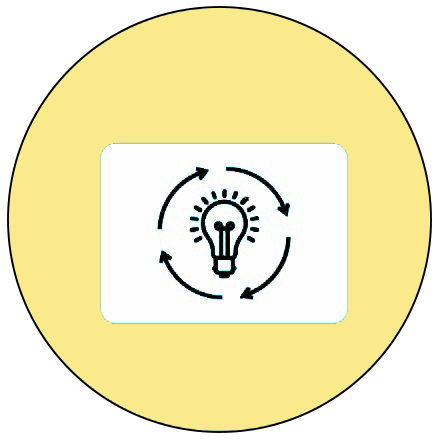
Pre-number Skills
Week 1 – Observation Skills
Learning Outcome
Observes, understands, remembers and recalls the things they see and recognises the relationships between them.
 Objective
Objective
Children will be able to observe the patterns, colours, shapes, sizes and smell of different objects.
 Prerequisites
Prerequisites
Children should be able to focus for some time on an object or a picture shown to him / her.
 Pre-teach Vocabulary
Pre-teach Vocabulary
Colours, animals, birds and at least a few things around them.
Introduction
A visit to the Park
Nipun was walking in the park with his mother. Every day his mother would carry some flour in an old salt dispenser to feed the ants on the path. Nipun sprinkled the flour near the little mounds in the grass. He was happy to see the ants feeding on it.
He noticed that his mother picked up the empty bowl lying in the corner. She washed it at the tap nearby. She filled it with water and put it for the birds. Soon some crows and sparrows came to drink water. One little sparrow even took a bath in the bowl. She fluttered her wings and splashed in the water. Nipun laughed when he saw that.
Nipun met their neighbour’s son Madhav. He noticed that Madhav had brought some bread slices to feed the birds.
Mother put the salt dispenser into her jacket’s pocket before they left the park. She said, “Namaste!” to her friends and also talked to them for some time.
Some children were plucking the flowers in the flower bed. Mother told them that flowers are not to be destroyed. They also have life in them just like ants, birds and us!
Resources required: Video of the story
Procedure:
- The teacher first shows the video and instructs the children to watch / listen to it carefully.
- She asks them to watch the birds and things that are shown in the video.
- After watching the video, she asks the following questions for discussion to understand the observation ability of the children:
1. Name the birds that appeared in the story?
Answer: Sparrows and crows.
2. What did Nipun’s mother feed the ants?
Answer: Flour.
3. What did Madhav feed the birds?
Answer: Bread slices.
4. What were children doing in the park?
Answer: Some children were plucking flowers.
5. What was the colour of the sparrow, and crow? (Depends on the picture)
6. What value did you learn from this story? (Answer can vary) - The teacher should help the children to answer and show the pictures of ants, crow and sparrow.
- She explains that it’s so important to observe the things around us to be aware of what is happening around us.
Video: A visit to the park
ISL Video: A visit to the park
Picture card: A visit to the park
Activity 1: Treasure Hunt
Objective: To give the children an opportunity to:
- Observe and move around in the corridor (or any safe specified area)
- Look for the flash cards related to the picture shown to them and place them near to the picture shown.
Importance of the activity for children:
Helps in developing:
- Gross motor skills (moving around)
- Spatial awareness and visual perception skills (move around to navigate and search for the related pictures)
- Cognitive skill (attention to details)
- Perceptual skills (recognise similarities and differences)
- Social skills (interaction and collaboration among children)
- Communication skills (discussions among the children)
- Problem solving skills (follow the clues)
Resources required:
- Pictures of Living room, Fruit shop, Vegetable shop, Traffic and Classroom.
- Separate flashcards for each image shown in the scenes. For example, small-size flash cards/cut outs of different pictures like different vegetables for vegetable shops.
Setting for the activity:
- Indoor/Outdoor activity (The teacher may ask the children to sit in a circle to give instructions and then make them into groups of 4).
- Flashcards are kept in different places for children to search in a confined / marked space.
Type of activity: Group activity
Preparation of activity: Instructions to children:
- Work as a team
- Minimum 6 pictures to collect for a scene
- Help your team members
- You can walk and move around
- Place the flash card properly
The display area can be chosen where the flash cards / cut outs of the things will be displayed by maintaining a certain distance between them so that the children can walk freely to collect the desired cut out.
Role of the teacher: Facilitator, mentor and observer.
Procedure:
Introduction and Instructions – Indoors
- The teacher may use LTM to introduce the activity to the children by demonstrating.
- First the teacher will show the picture of the living room. (A living room picture to be shown and flash cards of sofa, lamp, stool, photo frame, flower vase, plants can be displayed.)
- Then the teacher will ask the names of the things present in the living room.
- Then the teacher will walk around and look for the relevant flashcard / cut out of things from the cards displayed.
- Finally, the teacher will place them near the living room picture.
- The teacher will instruct the children to observe the picture shown and pick up the things related to the picture from the cards displayed.
During the activity:
- The teacher will call each group and show them the respective pictures.
- Group 1: Vegetable shop and flash cards of baskets of vegetables like potatoes, ladyfinger, carrots and a few more vegetables, with the weighing scale and the vendor sitting.
- Group 2: A classroom picture to be shown and flash cards of table, chair, black board, chalk piece, posters on the wall, racks to keep things and notebooks can be displayed.
- Group 3: A traffic picture to be shown and flash cards of car, bus, cycle, and van can be displayed.
- Group 4: Fruits shop with flash cards showing different fruits displayed with the fruit vendor sitting.
 Note to the teacher:
Note to the teacher:
The teacher may constantly guide and encourage the children and ensure that the group is under protective supervision to freely move in the display area. The children with special needs get adequate assistance to participate in the activity.
Refer to ‘Attention and Focus’ Adaptations and Strategies given in the Main page of ‘Pre-number Skills’ if there are any neuro-diverse children in the class.
Observation: Sharing the observations and experiences – Indoors
The teacher may encourage the children to share their observations and experiences by eliciting answers to the following questions.
- Did you enjoy this activity? Why?
- Have you been to any vegetable market? Anything else you would like to share?
- What was your feeling when you found your pictures?
- Do you like the object you picked up?
- Do you know any use or the value of the thing you picked up?
Conclusion:
From the picture cards picked up, children will be able to observe and describe finer details of common objects, vegetables, fruits etc.
Suggested variation in the activity:
- The teacher can form more groups.
- The teacher can increase the number of children in each group.
Follow-up activity:
Children can be asked to draw a picture of an object from the card they have picked up.
Cross-Curricular Connection:
- In Language class: The teacher may introduce new words related to shop/ market/ road and classroom to enhance their spoken language skill.
- In Art class: The follow-up drawing activity can be linked to the art and craft class. The teacher may also involve children in making a collage of the objects in the picture by providing them with marble paper bits, dal, etc.
- In EVS class: Children can be encouraged to think of uses of different objects used in the activity.
- Value education: Explain how different objects can make a beautiful place.
Video: Treasure hunt
ISL Video: Treasure hunt
Picture cards: Living room
Picture cards: Fruits
Picture cards: Vegetables
Picture cards: Classroom
LTM: Picture cards – Traffic
Activity 2: Smell Adventure
Objective:
To give the children an opportunity to enhance their focusing ability and observation skills by comparing different smells through the activity.
Importance of the activity for the children:
Helps in developing:
- Gross motor skills (moving around)
- Perceptual skills (observing different smells)
- Cognitive skill (recognising different smells and identifying by reasoning)
- Social skills (interaction and collaboration among children)
- Communication skills (discussions among the children)
Resources required:
- Various small containers with lids (e.g., small jars, tupperware).
- Cotton balls
- Essential oils or aromatic substances (e.g., vanilla essence, lemon juice, coconut oil, rose perfume, dettol, fruits like orange, mango, vegetables like onion and garlic).
- Labels or markers stuck under the jars.
- Picture cards or illustrations corresponding to the smells.
Setting for the activity:
- The activity can be done indoors or outdoors depending on the space availability.
- Smell stations (3 to 4)
Type of activity: Group activity
Preparation of activity:
- Prepare the containers by placing a cotton ball inside each one.
- Add a few drops of different essential oils or aromatic substances to each cotton ball.
- Seal the containers tightly to preserve the scents.
- Keep one or two containers at each station on the tables.
Role of the teacher: Facilitator, mentor, observer
Procedure:
- The class is divided into groups.
- Each group visits a smell station and discusses among themselves.
- They describe the scent using adjectives (e.g., sweet, citrusy, floral).
- They can guess what the scent might be and discuss their observations as a group before moving to the next station.
- They can then place the picture cards next to the jar they guessed.
- Later they can also revisit the station for more exploration.
- They can use their observation skills to notice any differences or similarities between the scents.
Observation:
- The teacher can gather the students back together and facilitate a group discussion.
- Ask them to share their observations, including any scents they found challenging to identify or particularly enjoyed.
Conclusion:
Children will be able to observe different smells and discuss with the class.
Suggested variation in rules:
- The teacher can form more groups depending on the class strength.
- The children can identify the smell and write them in their notebooks according to the stations visited. For example – rose (station 1)
Video: Smell adventure
ISL Video: Smell adventure
LTM: Picture Cards – Smell adventure
Check list for teacher:
| Activity | Yes | No | Sometimes |
| Children can: | |||
| Observe the patterns, colours, shapes, sizes and smell of different objects | |||
| Remember, recall the things they see | |||
| Recognise similarities and differences in the things they see | |||
| Focus on the activity | |||
| Complete the activity in the given time | |||
| Able to express verbally and through actions, expressions or gestures |
Home Activity: Find the Difference
Aim:
To give the children an opportunity to enhance their focusing ability by comparing the similarities and differences.
Resources required:
Poster / picture card (laminated), whiteboard marker, a cloth to wipe.
Setting for the activity: Indoor activity
Type of activity: Individual activity
Preparation of activity:
Printouts of the pictures
Laminate the pictures
Procedure:
- The parent or an adult may use LTM (a picture of underwater living things) to introduce the activity to the children. They may ask them to describe the 1st picture and then the second picture. Later they can focus on the differences in the two pictures.
- Circle the objects which are different using a marker on both the pictures.
- Give some clues and specify certain areas where there are differences to guide the children.
- The children perform the activity in a similar way by circling the differences in the picture.
Refer to ‘Working memory’ Adaptations and Strategies given in the Main page of ‘Pre-number Skills’ if there are any neuro-diverse children in the class.
Observation:
The next day in the class, the children can share their experiences with others when the teacher elicits answers to the questions like the following.
- Did you enjoy the activity of finding the differences?
- What difference did you spot first? Why?
- Is there a colour difference in the objects?
- Is there a shape difference in the objects?
- Is there a missing object?
Conclusion:
Children are able to observe and describe the differences in the pictures.
Follow-up activity:
- Observe the sky at night and day and draw day and night in your drawing book
- Draw two similar things with little difference in them.
Picture cards: Find the difference
Teacher Resource Document
| Source and Attribution of images: All images used in the above Assets and Aids are originally created. |
| This digital material has been developed by the Sri Sathya Sai Vidya Vahini Inclusive Education Project, a unit of Sri Sathya Sai Central Trust, Prasanthi Nilayam, as a collaborative offering in the service of our nation. |